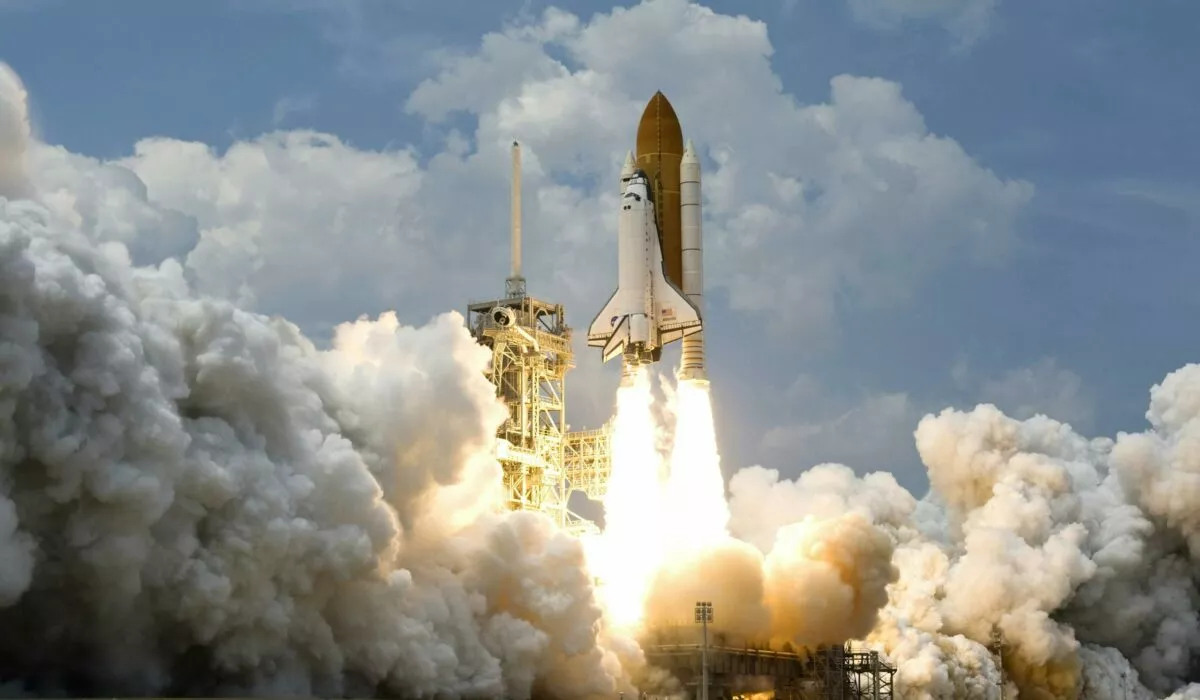Thinking
““10,9,8,7,6,5,4,3,2,1, BLAST OFF!” Those words initiated the start of revolutionary discoveries that have been crucial in solving the conundrum of our universe and outer space; this could not have been possible without rockets. Although seen as quite complex machines, rockets use simple laws of physics to operate; for example, the propulsion of the rocket is derived from Newton’s third law which states that every action has an equal and opposite reaction. Throughout history, these formidable machines have been used in various different ways. However, its usage in the exploration of space has benefited humanity profoundly, such as Apollo 11. Launched by NASA on July 16th, 1969, it showed us the wonders of the moon and provided more insight into the beauty that it presented – with rock craters and its unique surface texture. Similar to many of the innovations that we have created which have had such a powerful influence on humanity, the concept of rockets simply stemmed from a simple idea which fuelled the “creation of machines that can have such a remarkable impact on the world that we live in now.
The history of rockets can be traced back thousands of years ago to the period in which Romans and Greeks ruled in supremacy. Writings of Aulus Gellius suggest the creation of a wooden pigeon that could fly, manufactured by a Greek named Archytas who aboded in the ancient city known as Tarentum. In 400 BC, this strange sighting, revolving around the action reaction principle, baffled the citizens, as steam was escaping from the bird – this propelled it as it was suspended on wires”
An aeolipile was a similar rocket like device which was designed by another Greek, known as ‘Hero of Alexandria’, 300 years after the first written recording of the pigeon, and almost identical to the wooden bird, it too employed steam as a propellant. Hero placed a sphere over a kettle of water under which a fire was ignited to produce steam-this steam was then directed via pipes to the sphere and the gas was able to leave through two l-shaped tubes connected on either side of the sphere which resulted in a thrust force and caused this sphere to be rotated.
The launch of Apollo 11 on July 16, 1969. Image source: NASA
Although rockets’ invention cannot be traced to an exact time period, there have been many stories of devices from which the design of rockets has been inspired from. Tubes packed with gunpowder were first used for experiments by the Chinese where they utilised the bows to launch the bamboo-tube-mounted arrows at some point. They quickly learned that the power generated by the escaping gas was all that was needed for these gunpowder tubes to launch themselves and at that point the true rocket was born. The year 1232 was recorded as the first time that real rockets were used when the Mongols and the Chinese were at war with one another at this period. A flurry of “arrows of flying fire” helped the Chinese repel the Mongol invaders during the battle of Kai-Keng and these fire arrows served as a basic type of rocket which was powered by a solid propellant rather than steam. Powdered nitrate was contained in a capped tube and the tube was fastened to a long stick with one end left open hence when the powder was ignited, it burned quickly, releasing gas, smoke and fire out the open end which resulted in a thrust force. As the rocket shot through the air, the stick served as a basic guidance system that kept it pointed in a single general direction. It is important to acknowledge that although the effectiveness of these flying fire arrows as weapons of mass destruction is unknown, they must have had a devastating psychological impact on the Mongols.
The renowned English scientist Sir Isaac Newton (1642–1727) established the scientific groundwork for modern rocketry in the latter half of the 17th century. Newton divided his theories about physical motion into three categories known as scientific laws. The principles clarify how and why rockets function in the vacuum of space and rocket design soon started to be practically impacted by these laws. In the late 18th and early 19th centuries, rockets saw a brief resurgence in use as military weapons. Colonel William Congreve, an expert in artillery, became interested in the Indian rocket barrages that were successful in 1792 and 1799 against the British and so he set out to create rockets that the British military could use. In combat, the Congreve rockets proved to be very effective for instance during the war of 1812, British ships would use them to ravage Fort McHenry; this prompted Francis Scott Key to include the words “the rockets’ red glare” in his infamous poem known as The Star-Spangled Banner. Despite Congreve’s efforts, rocket accuracy had not significantly increased since the beginning as the quantity of war rockets—rather than their accuracy or power—was what made them so devastating. Hence, this urged many rocket scientists to experiment with ways to increase accuracy all over the world. William Hale, an Englishman, created a method known as spin stabilisation and using this technique, the rocket’s bottom had tiny vanes that were struck by the escaping exhaust gases, which caused the rocket to spin similarly to a bullet in flight and this idea is still applied in various forms today.
Modern rocketry originated when Russian educator Konstantin Tsiolkovsky (1857–1935) first proposed the idea of using rockets to explore space in 1898. He postulated to use liquid propellants in rockets to increase range in a report he released in 1903 and according to Tsiolkovsky, the exhaust velocity of escaping gases is the only factor limiting a rocket’s speed and range. Taking this into account, solid-propellant rockets were the subject of Goddard’s initial experiments, and he started experimenting with different kinds of solid fuels and measured the burning gases’ exhaust velocities in 1915. During his work on solid-propellant rockets, Goddard came to the conclusion that liquid fuel would make a rocket fly more efficiently. Before now, no one had ever constructed a liquid-propellant rocket successfully and turbines, combustion chambers, and fuel and oxygen tanks would all be required. Despite the challenges, on March 16, 1926, Goddard made history by accomplishing the first successful flight using a liquid propellant rocket. The rocket, which was powered by gasoline and liquid oxygen, took just 2.5 seconds to launch, climb 12.5 meters, and land 56 meters away.
There are many other people who contributed to the advancement to rocket science in general and through their works and findings, these incredible machines have revolutionised the world and outer space. There is once quote which narrates this beautiful story of the development of rockets:“one small step for man, one giant leap for mankind”.
References:
1. https://www.grc.nasa.gov/www/k-12/TRC/Rockets/history_of_rockets.html
2. https://www.grc.nasa.gov/www/k-12/rocket/BottleRocket/20thBeyond.html
3. https://www.space.com/29295-rocket-history.html


